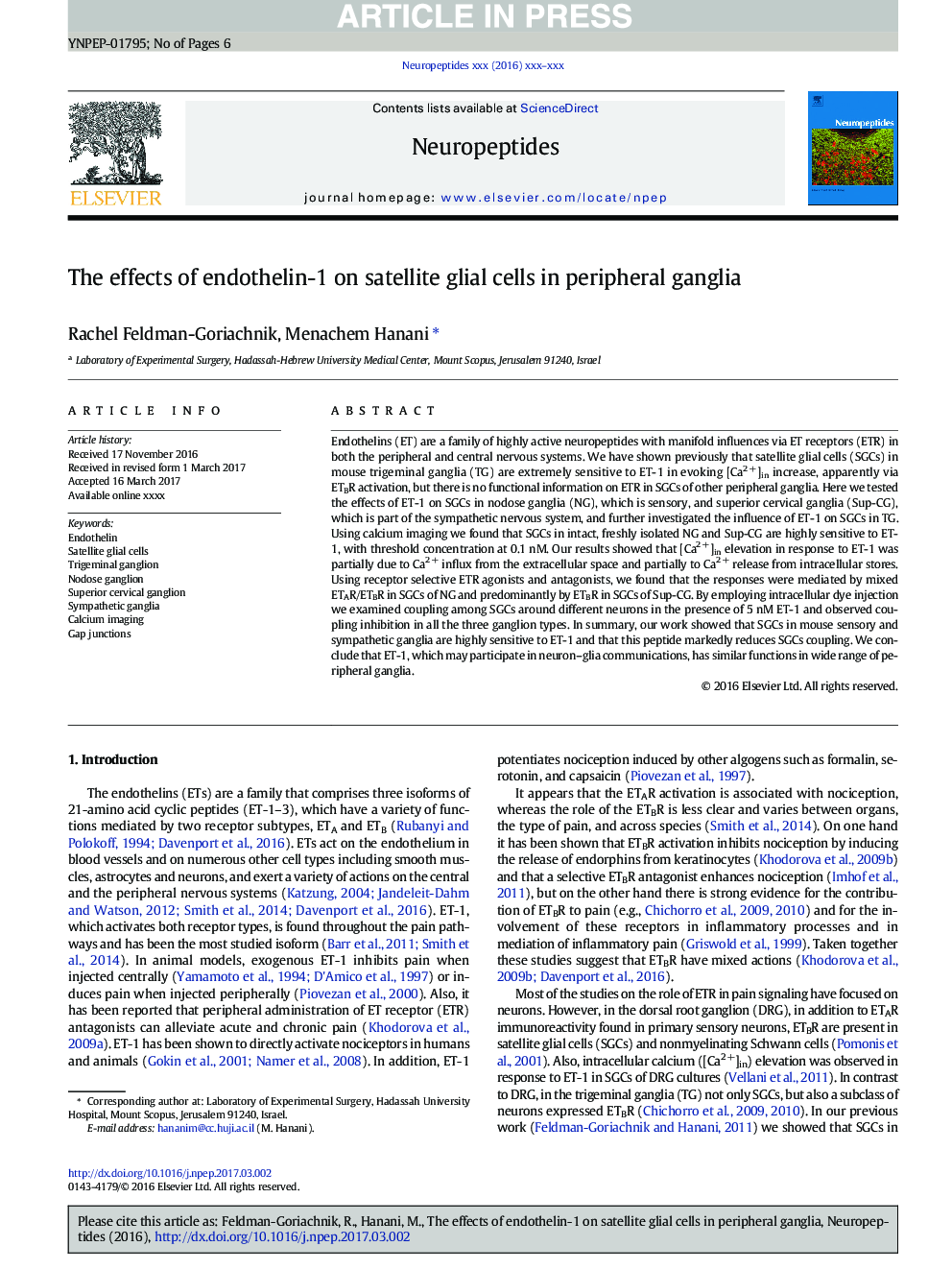| Article ID | Journal | Published Year | Pages | File Type |
|---|---|---|---|---|
| 8633627 | Neuropeptides | 2017 | 6 Pages |
Abstract
Endothelins (ET) are a family of highly active neuropeptides with manifold influences via ET receptors (ETR) in both the peripheral and central nervous systems. We have shown previously that satellite glial cells (SGCs) in mouse trigeminal ganglia (TG) are extremely sensitive to ET-1 in evoking [Ca2Â +]in increase, apparently via ETBR activation, but there is no functional information on ETR in SGCs of other peripheral ganglia. Here we tested the effects of ET-1 on SGCs in nodose ganglia (NG), which is sensory, and superior cervical ganglia (Sup-CG), which is part of the sympathetic nervous system, and further investigated the influence of ET-1 on SGCs in TG. Using calcium imaging we found that SGCs in intact, freshly isolated NG and Sup-CG are highly sensitive to ET-1, with threshold concentration at 0.1Â nM. Our results showed that [Ca2Â +]in elevation in response to ET-1 was partially due to Ca2Â + influx from the extracellular space and partially to Ca2Â + release from intracellular stores. Using receptor selective ETR agonists and antagonists, we found that the responses were mediated by mixed ETAR/ETBR in SGCs of NG and predominantly by ETBR in SGCs of Sup-CG. By employing intracellular dye injection we examined coupling among SGCs around different neurons in the presence of 5Â nM ET-1 and observed coupling inhibition in all the three ganglion types. In summary, our work showed that SGCs in mouse sensory and sympathetic ganglia are highly sensitive to ET-1 and that this peptide markedly reduces SGCs coupling. We conclude that ET-1, which may participate in neuron-glia communications, has similar functions in wide range of peripheral ganglia.
Keywords
Related Topics
Life Sciences
Biochemistry, Genetics and Molecular Biology
Endocrinology
Authors
Rachel Feldman-Goriachnik, Menachem Hanani,
